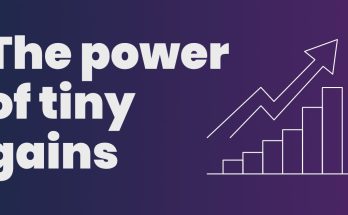Every business, no matter how successful, will eventually encounter periods when the pace slows, the phone rings less frequently, and sales figures stagnate. These lulls, whether seasonal, cyclical, or unexpected, can undoubtedly be unsettling, prompting worry and a sense of helplessness. However, viewing slow periods not as a crisis but as an invaluable opportunity for introspection, strategic realignment, and proactive preparation can transform a potential downturn into a catalyst for future growth. The key lies in shifting from a reactive mindset of anxiety to a proactive stance of intelligent action.
One of the most immediate and crucial steps to take when business is slow is to conduct a thorough financial review. This isn’t about panicking and making impulsive cuts, but rather gaining a clear and honest picture of your current cash flow, expenses, and potential vulnerabilities. Scrutinize every line item: Are there subscriptions you no longer use? Can you renegotiate terms with suppliers? Are there any non-essential expenditures that can be temporarily paused or reduced? This financial deep dive allows you to understand your burn rate and identify areas where you can conserve capital, extending your runway during leaner times. For instance, a small marketing agency experiencing a dip in new client acquisition might review their software subscriptions, consolidate tools, or even temporarily reduce office space if a significant portion of their team is working remotely. The goal is to optimize resources and ensure liquidity, providing a stable foundation to weather the storm.
Beyond the numbers, a slow period offers an unparalleled opportunity to re-engage with your existing customer base. While the instinct might be to chase new leads, nurturing current clients is often more cost-effective and can yield immediate results. Reach out to past customers who haven’t purchased recently, perhaps with a personalized offer or a reminder of the value you provide. Solicit feedback from loyal clients to understand their evolving needs and identify areas where you can enhance your service or product. This isn’t just about making a sale; it’s about strengthening relationships and building loyalty that will serve you well when business picks up. A boutique clothing store, for example, might host an exclusive online event for their loyal customers, offering styling tips or early access to a new collection, transforming a slow sales week into an opportunity for deepening customer relationships and potentially generating immediate revenue.
Furthermore, a lull in activity is the perfect time to turn inward and critically assess your operational efficiencies and internal processes. Are there bottlenecks in your workflow? Could certain tasks be automated or streamlined? Is your team utilizing their time effectively? This period provides the space to implement those improvements you’ve always wanted to make but never had the time for during busy periods. For instance, a software development company experiencing a temporary dip in projects might use the time to refactor old code, improve documentation, or develop internal tools that will boost productivity when the next wave of projects arrives. Investing in operational improvements now can lead to significant cost savings and increased capacity down the line, positioning your business for faster growth when demand returns.
This also extends to investing in your team. When client demands are lower, there’s a unique opportunity for professional development and skill enhancement. Instead of idle time, encourage employees to engage in online courses, attend webinars, or work on internal projects that build their capabilities. This not only keeps morale high but also equips your workforce with new skills that will be invaluable in the long run. A sales team with fewer client calls might spend time refining their pitch decks, learning new CRM features, or participating in role-playing exercises, ensuring they are sharper and more effective when the market rebounds. Empowering your team during slow periods signals your commitment to their growth and fosters a more resilient, skilled workforce.
Finally, a slow period is an ideal time for strategic planning and innovation, allowing you to proactively shape your future rather than merely reacting to market forces. Revisit your business plan, analyze market trends, and identify emerging opportunities or potential threats. Could you pivot your offerings to address new customer needs? Are there new markets you could explore? This is the moment to research, brainstorm, and even pilot new products or services that could diversify your revenue streams or provide a competitive edge. A fitness studio, seeing a decline in traditional memberships, might use the slow period to develop an online class library or launch virtual personal training packages, anticipating a shift in consumer preferences. By strategically using the downtime to innovate, you are not just surviving the lull, but actively preparing to thrive in the next cycle of growth.
In essence, while a slow period in business can feel challenging, it represents a crucial window of opportunity. By meticulously managing finances, deeply engaging with existing customers, optimizing internal operations, investing in your team’s development, and proactively planning for future growth, businesses can transform periods of quiet into phases of profound strength building. The businesses that emerge strongest from these lulls are not those that simply wait it out, but those that strategically leverage the breathing room to refine, innovate, and prepare for the inevitable upturn.




